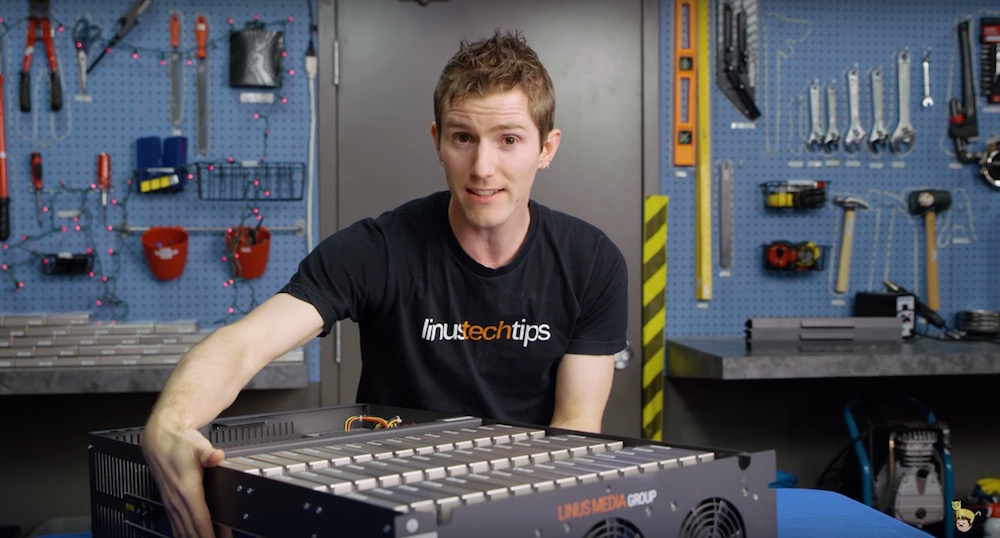What does a petabyte worth of Seagate storage look like, physically?
Imagine one hundred of our 10TB Enterprise Capacity 3.5 HDD hard drives. That’s what Linus Sebastian, one of our favorite YouTube technology reviewers who runs Linus Tech Tips, is putting to use in his team’s new massive-capacity RAID server.
Watch his video below to see how Linus has fun unpacking all those helium-filled drives before putting them into a storage system for archiving his 8K videos and other big files.
Choose the right tools
If Linus is going to deploy a massive petabyte, why is he choosing Seagate Enterprise Capacity hard drives, you ask?
“We’re using them for a number of reasons,” Linus answers. “These are in the same series of drives as what we’ve used in the past in both our vault as well as our offsite backup server, but with some technological advancements. Since we’ve built the original long-term archive vault ‘Newton’ server, Seagate has gone from 6TB to [now up to 12TB] on their maximum capacity drive. Thanks to their helium-filled enclosures, they are more efficient than ever before.”
“There’s also a degree of trust that comes with a choice like this. And using something that has served us incredibly well in both the Vault and our offsite backup was a fairly easy decision to make.”
Who needs a petabyte?
Of course a petabyte is awfully fun, but Linus also wants to be sure to answer the question he’s sure a lot of viewers probably have about the project:
“Why on Earth do you guys need a petabyte of freaking storage??”
“The answer’s pretty simple,” he says. “We archive everything. I’m a bit of a data packrat, so we archive absolutely everything. And we recently updated to the 8K camera that you guys are watching this super-sharp, super-crisp footage on.”
“So we have filled up our 170TB archive machine,” he says. Naturally. “We need to upgrade to something, and this looked like a super, relatively cost-effective way to handle it, and one that allows us to not dramatically change our infrastructure. We can expand it in the future by sliding in more Storinators full of drives.”
He also describes what his team specifically likes about the Storinator XL60 server design, and why despite being a fan of unRAID, the team decided to setup the petabyte system with two Storinator units, using Linux running ZFS, dividing all the drives into VDEVs (a virtual device RAID setup).
Then on top of that they’re running GlusterFS because it’s open source and allows Linus to take his multiple servers and effectively make them transparent to every other computer to the network as one machine. Bonus: it also has native support for SSD tiering, which will let Linus set up two Seagate Nytro NVMe flash cards to act as a high-speed, high IOPs cache in front of the massive capacity hard drives.
And that’s how you future-proof your video production and archiving system!







